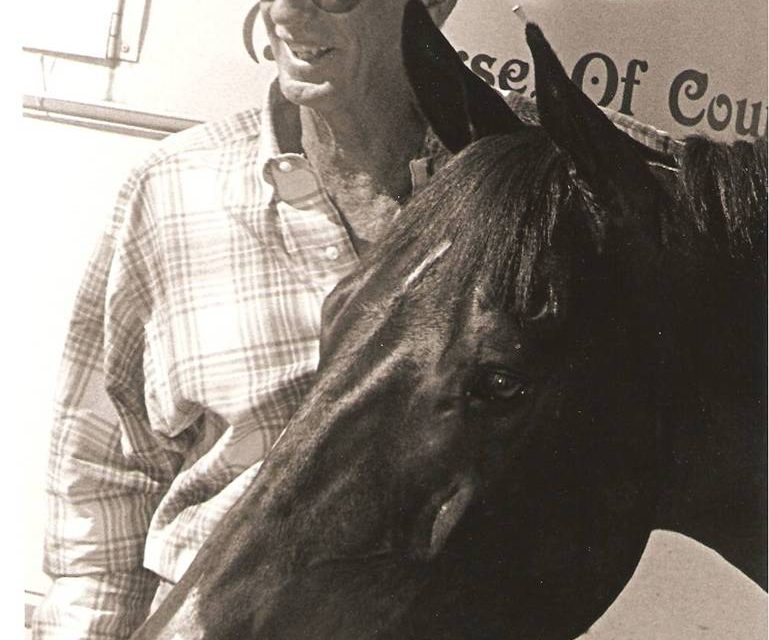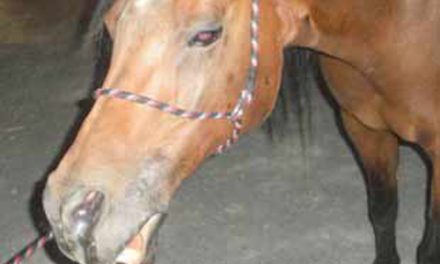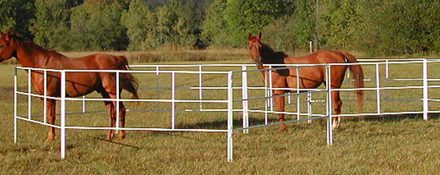A Horse, Of Course
Every time you turn around your horse has another cut, scrape, bump, lump, slash or puncture.
And you can be sure the new boo boo occurred moments before the show class, the race, the event or the pleasure trail ride.
Sometimes the disaster needs a little loving care. Sometimes it needs some professional medical treatment. It always needs a little attention.
The first rule of first-aid for horses is to treat the injury as soon as it is discovered. The first treatment may be minor, such as rinsing off with cool clear water. In any case, make sure your first treatment will be beneficial to further treatment and healing.
Don’t take action without thought. Putting the wrong medication of a wound may cause complications. If you are not sure about the medication, don’t apply it. And if the medication is a salve be sure it a water soluble salve that can be removed easily.
Using a time frame is probably the best way to determine whether or not you have an injury which simply needs minor care, needs emergency first-aid or needs professional medical attention.
If your horse has a bleeding wound, the question is one of survival. A horse can lose a lot of blood, but not for long. A slow dripping or running of blood which lasts less than 10 minutes is not too serious. A heavy flow of blood which last longer than 10 minutes is very serious, and is an emergency.
Wounds without a lot of bleeding may be emergencies if you think they need suturing. To delay getting a wound stitched may result in contamination causing further complications. Leg wounds often fit into this category. Wounds on the face and body may also need suturing. Have your veterinarian take a look as soon as possible.
All other wounds, scrapes, lumps or bumps are probably not emergencies, and will fall into the “loving care” or “professional attention” categories.
A horse which scrapes the hide off a spot or two, or has a shallow cut which is not too long, generally just needs “your loving care.”
Major blows to the horse’s body are often candidates for “professional attention”. A horse that falls, runs into a fence or kicks a solid object and then shows some signs of lameness or an inability to move normally should be seen by a vet.
If the injury falls into the “needs first-aid” emergency category, you need to take two actions immediately: call your veterinarian and apply the initial treatment while waiting for assistance.
In applying the initial treatment you must do a combination of three or four things:
1. Free the injured area of contamination as best you can. This usually means running cold, clear water on the wound. If running water is unavailable, get a bucket or pan of water and sponge the wound.
If you can’t do either of those, don’t mess it!
2. Continue to run water on the wound to keep it clean and keep the swelling down. If you can do that, don’t mess with it!
3. If the wound is bleeding, you may apply a compress of direct pressure. A compress should be bulky and can be made of clean towels. Emphasis is on “pressure” and “clean”.
4. Determine the status of your horse’s tetanus immunization. Your veterinarian will want to know.
It is a wise horseman who keeps the rules of first aid treatment in mind.
There is a final rule (don’t ever forget it) if I’m around to help with a bleeding nasty looking wound.
If I faint, everyone call everyone! It’s an emergency.
Visit A Horse, Of Course on the Internet at www.donblazer.com






